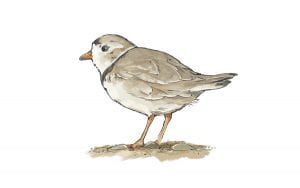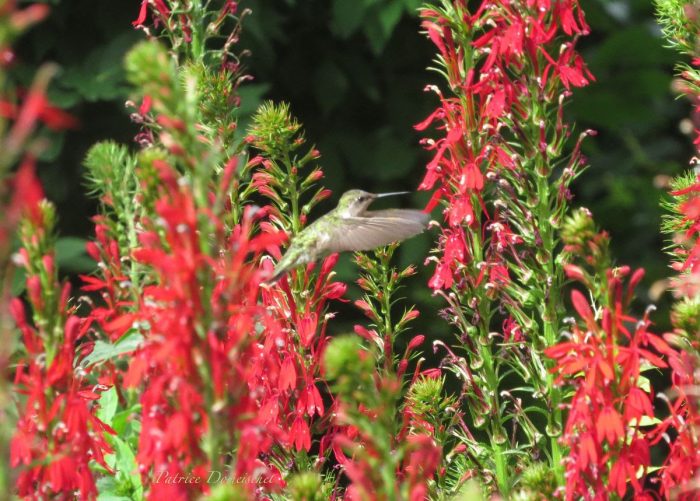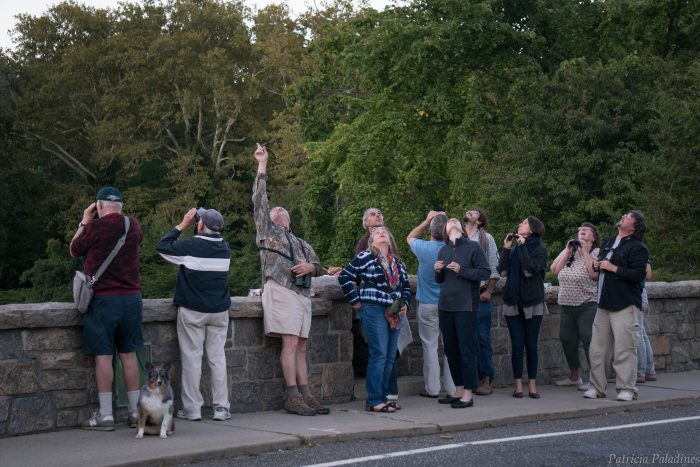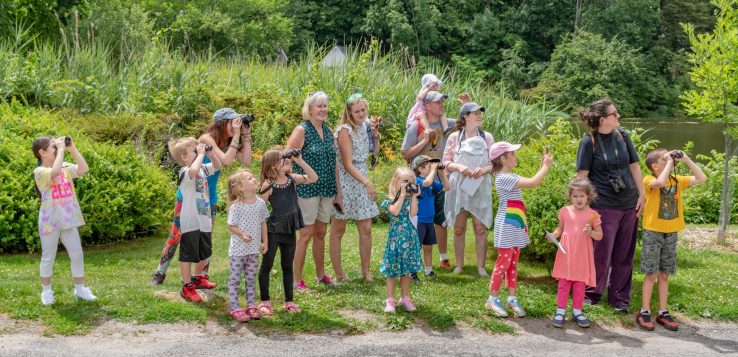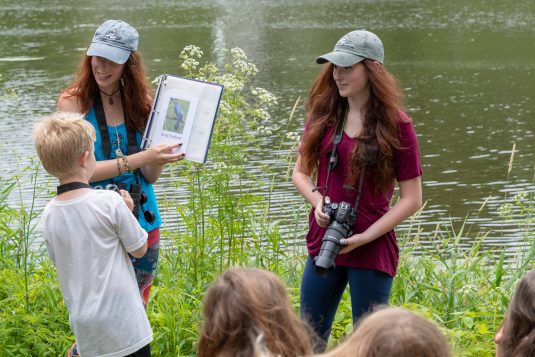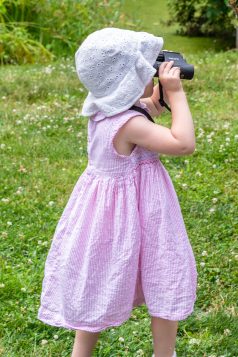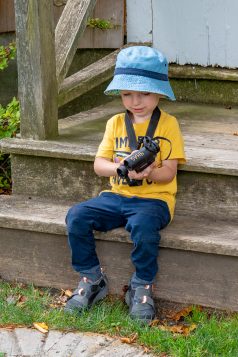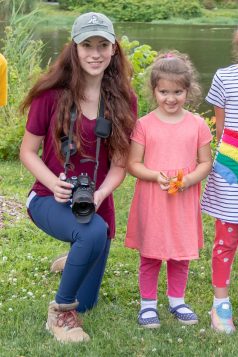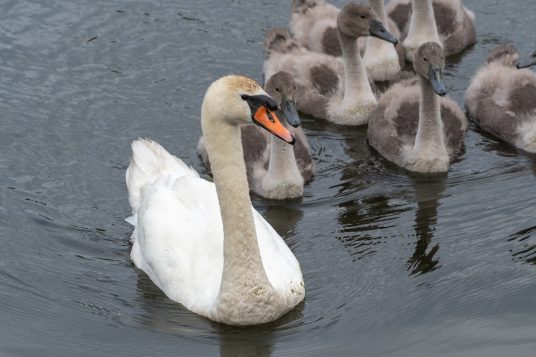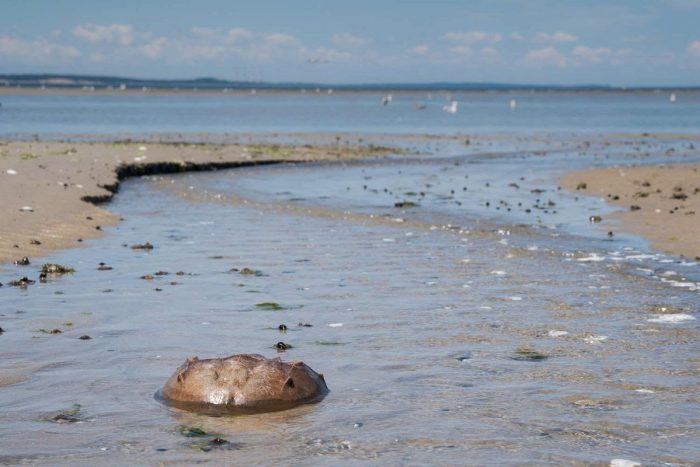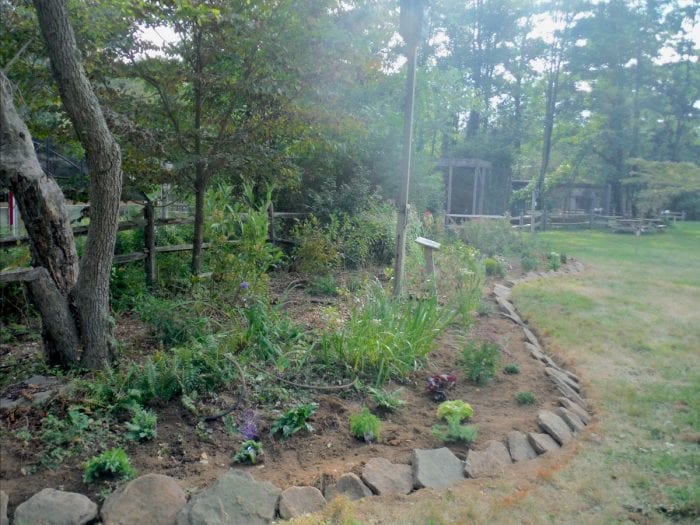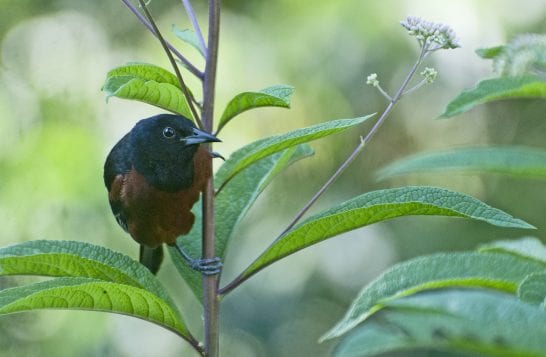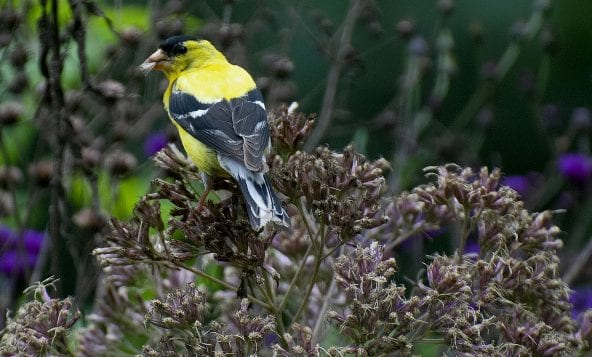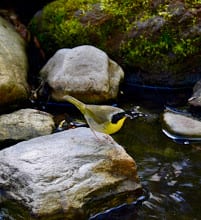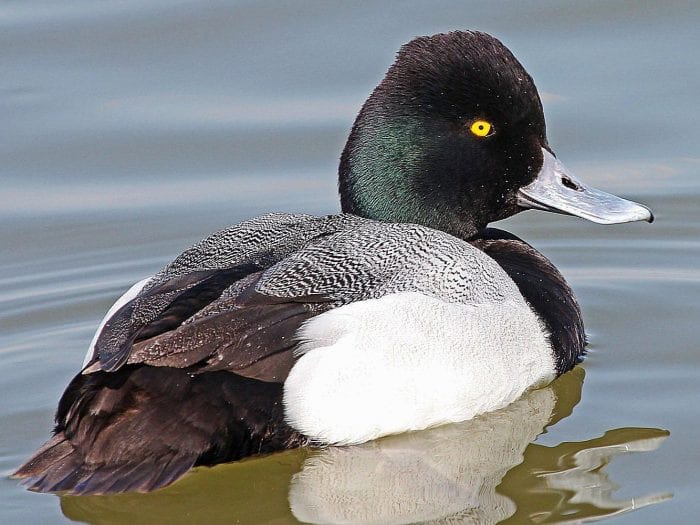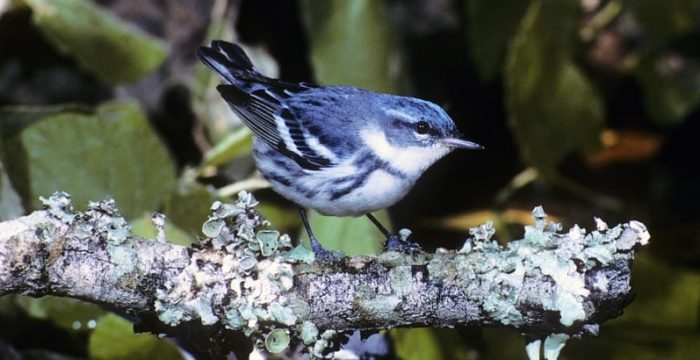Native shrubs and herbaceous perennials that are valuable for pollinators and in a bird-friendly habitat will be for sale at the Four Harbors Audubon Society Fall Plant Sale on Oct. 2 at the Safina Center, 80 North Country Road, East Setauket. 9 a.m. to 11 a.m. FHAS members only, 11 a.m. to 4 p.m. open to the general public. For more information, call 675-1803 or visit www.4has.org.
Four Harbors Audubon Society
Stone Bridge Nighthawk Watch returns
By John L. Turner
Beginning on Friday, August 27th, the Four Harbors Audubon Society will kick off its fifth season of the “Stone Bridge Nighthawk Watch” at Frank Melville Park in Setauket. Each night participants will meet on the north sidewalk of the Stone Bridge (where Main Street crosses the water) and count Common Nighthawks as they pass overhead during their fall migration.
The Watch begins at 5:30 p.m. and concludes at dusk each night, when observers typically see bats emerge to forage for insects over the ponds. Sometimes participants are rewarded with a dozen or so nighthawks feeding on aerial insects low over the ponds before it gets too dark.
Nighthawks, related to whip-poor-wills, are highly migratory birds that leave the Northern hemisphere in the autumn as their insect prey wanes, ending up a few weeks later in the Amazon River basin where they overwinter. Unfortunately, as with so many bird species the Common Nighthawk is declining and the Nighthawk Watch was established by the Four Harbors Audubon Society as an effort to gather more specific long-term data about its numbers and population trends.
Participants often see other birds species such as Bald Eagle, Peregrine Falcon, Great Blue and Green Herons, Belted Kingfisher, many types of songbirds and mute swans. The Watch runs through to October 6. Please join us. The only items recommended for you to bring along are binoculars and a healthy curiosity about the natural world!
Frank Melville Memorial Park is located at 1 Old Field Road, Setauket. For more information, visit www.4has.org.
Cayla’s Column: Children’s Birding Adventures take flight
By Cayla Rosenhagen

“Look, look! There’s a bird up in this tree … and there’s a nest, too!”
A young boy with binoculars pressed against his face cheerfully announces what he has found. An American Robin flies to her nest, cozily tucked in a nearby cedar; the child notices she has a worm in her bill. More young birders gather to watch in awe of the mother robin feeding her recently hatched chicks.
Nothing compares to watching a child’s face light up with happiness and fascination as they become immersed in the world of birds. I had the joy of seeing this firsthand. On June 27th, my sister Iris and I launched the first Children’s Birding Adventure at Frank Melville Memorial Park in Setauket for Four Harbors Audubon Society.
The event began early in the afternoon at the entrance to the park, as enthusiastic families circled around to introduce themselves on the lawn overlooking the lake. Their children ranged in age from infancy to age 10 and were bubbling over with questions and stories about wildlife they had seen. One of the participants, Olivia, 8, a birder for about two years, looked forward to seeing a Northern Cardinal, one of her favorite backyard birds.
Before our walk began, the children engaged in a round of nature-inspired activities, including Sparrow Says (Simon Says with an aviary twist) and a storytime, featuring a book by Kermit Cummings entitled A Backyard Birding Adventure: What’s in Your Yard? To further their birding knowledge, we presented the budding ornithologists with a photo album of birds we were likely to spot on our adventure. Bird BINGO cards, illustrating the same feathered friends, were handed out to all the children so they could record their sightings in a novel manner. Each youngster was then lent a pair of child-sized binoculars and taught how to use them.
Eagerly, we headed down the path encircling the picturesque Mill Pond. As we strolled the half-mile paved loop, a dozen children and their families surveyed their surroundings for birds and were met with great success. Catbirds, swallows, woodpeckers, swans, and warblers filled the lenses of every pair of binoculars. Little eyes spotted blue jays, sparrows, and egrets; the children announced their birding discoveries to the group with delight. The group paused along the old stone bridge and I pointed out turtles on a floating log and the blackbirds who nest in the nearby reeds. When birds weren’t readily in sight, scurrying chipmunks, zigzagging butterflies, and the iridescent wings of dragonflies captivated the young minds. As the hour-long event came to a close, it was so gratifying to hear from both parents and kids alike that fun was had by all, and much was learned about the natural world.
The members of Four Harbors Audubon Society have been my role models and mentors for many years and continue to inspire me. I started participating in their monthly bird walks when I was the age of many of the children who attended Saturday’s event. At age 16, I now serve on the Board of Directors for 4HAS, and it is a privilege for me to contribute to the younger generation’s love and appreciation of birds. Who knows? Birding may become a lifelong passion for them, as it has for me.
In the future, Four Harbors Audubon Society plans to run the Children’s Birding Adventures on a seasonal basis. If you are interested in joining us for our next program, please email us at [email protected].
Cayla Rosenhagen is a local high school student who enjoys capturing the unique charm of the community through photojournalism. In addition to the Four Harbors Audubon Society, she serves on the board of directors for Brookhaven’s Youth Board, and is the founder and coordinator of Beach Bucket Brigade, a community outreach program dedicated to environmental awareness, engagement, and education. She is also an avid birder, hiker, and artist who is concurrently enrolled in college, pursuing a degree in teaching.
Join Four Harbors Audubon Society for horseshoe crab count June 5
The Four Harbors Audubon Society hosts a horseshoe crab count at West Meadow Beach Trustees Road, Stony Brook on Saturday, June 5 from 8 to 9:30 a.m.
Join board member Patricia Paladines to count horseshoe crabs along the shore. Learn why these ancient creatures are important to people and other animals. A Town of Brookhaven parking sticker needed or pay at parking meters. Please bring mask or face covering.
Reservations are preferred. Please email Patricia Paladines at [email protected]m.
Join the 4HAS for Habitat Garden Maintenance Volunteer Day
The Four Harbors Audubon Society will host a Habitat Garden Maintenance Volunteer Day event at Sweetbriar Nature Center, 62 Eckernkamp Drive, Smithtown on Friday, May 28, from 4:30 p.m. to 6:30 p.m.
Four Harbors Audubon Society launches Bird Oasis program
Four Harbors Audubon Society (4HAS) is launching a brand-new, aptly named, “Bird Oasis” program on March 1. Property owners can now request a consultant from 4HAS to assess the quantity and quality of native plants and eco-friendly practices on the premises to help local bird populations and other wildlife to not just survive, but to thrive.
If the property qualifies, a certification level is determined and a sign is given to the owner, proclaiming the property a bird- and wildlife-friendly habitat. If the property is not quite ready, or a higher Bird Oasis certification level is sought, the consultant will create a list of improvements for the owner to implement.
Photos of the finished property are sent back to the 4HAS Bird Oasis team for reassessment. In addition, photos of the most attractive, “birdiest” yards will be featured throughout the year on the chapter’s website. There are also future plans to have a yearly “Best Bird Oasis” contest.
The reasons for this program are abundant. In suburbia, open space is at a premium and what exists is usually overrun by invasive plant species, creating large areas of low-quality food sources unable to support native wildlife in healthy numbers. Such habitat fragmentation and loss, coupled with climate change and inappropriate environmental practices is causing bird and other wildlife populations to fall into steep decline.
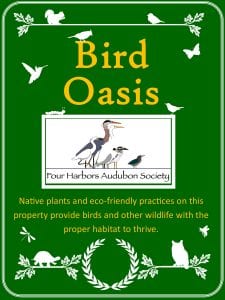 In 2018, the Suffolk County Department of Economic Development & Planning published its 2016 Land Use Study. In the report, Brookhaven Township and Smithtown Township had 27% and 17% recreational and open space, respectively. The report went on to quantify Brookhaven Township’s residential, commercial, institutional and industrial land use at a bit more than 50%. Smithtown Township in total is a bit higher at 63%. This land is the focus of the Bird Oasis program.
In 2018, the Suffolk County Department of Economic Development & Planning published its 2016 Land Use Study. In the report, Brookhaven Township and Smithtown Township had 27% and 17% recreational and open space, respectively. The report went on to quantify Brookhaven Township’s residential, commercial, institutional and industrial land use at a bit more than 50%. Smithtown Township in total is a bit higher at 63%. This land is the focus of the Bird Oasis program.
The program takes the concept of a healthy, robust ecosystem and places it directly into the homeowner’s or commercial building’s landscape by requesting property owners use more native plants and incorporate planet-healthy and sustainable practices when creating their outside space.
By choosing native plants with both excellent habitat services and tidy habits, landscapes that are both attractive and environmentally functional can be created. Bird Oasis consultants will also be looking for habitat features like wood or brush piles, ponds or birdbaths, winter forage in the form of seedheads and the insects found in plant stalks to be left up over the cold months and cut back in the spring, and other important ecoscaping concepts.
Additionally, the program focuses on environmentally healthy practices, like mulching grass clippings back into lawns, leaving leaves or shredded leaf litter down as, or under, mulch, and using organic slow-release fertilizers. An ecologically balanced yard cures its own ills within a short amount of time, so targeted pest management with organic principals should be used only when insect outbreaks or other issues are severe.
Chemical fertilizers and pesticides should be avoided on certified properties. Most insecticides and fungicides are broad spectrum, which kills both the good and the bad. They also seriously harm the soil food web. Additionally, excess nitrogen does not stay in the soil, but runs off or down into the water table — as do chemical pesticides — and causes harmful algal blooms in Long Island bays and estuaries.
It is hoped that people will see the beauty in these certified properties and notice all of the birds they attract. This will create additional excitement — and habitats —as more people create their own private sanctuaries, which will shift the current landscape paradigm to something more sustainable and environmentally-friendly.
“The potential to reverse the trend is there,” explains Joy Cirigliano, President of 4HAS. “If we can harness our managed landscapes and other properties to provide suitable habitat for our native plants and animals, and make them beautiful at the same time, it will help strengthen and heal our local ecosystem. All of our neighbors will be happy, including the furred and feathered ones.”
The Four Harbors Audubon Society Bird Oasis Program is available to any property within the *4HAS territory, including residential, commercial, industrial and municipal for a fee. The program consists of a one-hour consultation and property assessment and a certification sign.
*4HAS Territory:
Centereach, Coram, East Setauket, Hauppauge, Kings Park, Lake Grove, Middle Island, Miller Place, Mount Sinai , Nesconset, Port Jefferson, Port Jefferson Station, Ridge, Rocky Point, Saint James, Selden. Setauket, Shoreham. Smithtown, Sound Beach, South Setauket, Stony Brook, and Stony Brook Campus.
For more information, visit https://4has.org/bird-oasis after the program launch on March 1. For additional inquiries, please send an email to [email protected].
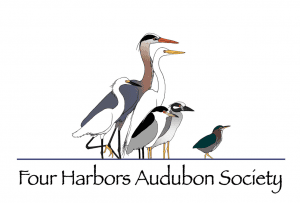 Four Harbors Audubon Society is a local chapter of the National Audubon Society. It is affiliated with Audubon New York and is a member of the Audubon Council of New York State. Its mission is to protect and preserve birds, wildlife, and the places and resources needed, for today and tomorrow.
Four Harbors Audubon Society is a local chapter of the National Audubon Society. It is affiliated with Audubon New York and is a member of the Audubon Council of New York State. Its mission is to protect and preserve birds, wildlife, and the places and resources needed, for today and tomorrow.
Four Harbors Audubon Society presents virtual winter workshop
Audubon Winter Workshop
Four Harbors Audubon Society presents a winter workshop, Identifying Winter Waterfowl, via Zoom on Thursday, Feb. 11 at 7 p.m. Guest speaker Mike Cooper will discuss tips and techniques for observing and identifying local waterfowl including seabirds and puddle ducks. Free. Email [email protected] to register.
*This post has been updated to reflect the new workshop date.
Four Harbors Audubon Society hosts free webinar Jan. 26
Audubon Zoom webinar
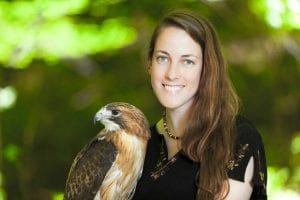
Calling all bird lovers! Join the Four Harbors Audubon Society for a webinar titled Saving the Cerulean Warbler on Tuesday, Jan. 26 at 7:30 p.m. Guest speaker Katie Fallon will share tips for finding and identifying Cerulean Warblers while birding, how you can help save migratory songbirds, and much more. Free and open to all but reservations are required by emailing [email protected]. Webinar registrants will be sent a link to join the program. For more info, visit www.4has.org
Stone Bridge Nighthawk Watch returns to Setauket
Four Harbors Audubon Society kicks off its annual Stone Bridge Nighthawk Watch at Frank Melville Memorial Park, 1 Old Field Road, Setauket on Thursday, Aug. 27 from 5:30 p.m. to dusk through Oct. 6. Volunteers most welcome. Take part in a census which is used to estimate Common Nighthawk migratory numbers each year and to better understand nighthawk population trends. Visit www.4has.org for further details.
On the 50th anniversary of Earth Day, birds are telling us it’s time to take action on climate change

By Brooke Bateman
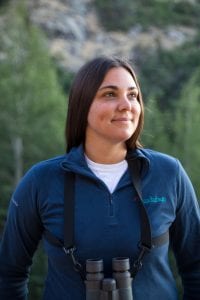
Fifty years ago on April 22nd, millions of Americans made their voices heard. It was this first Earth Day that brought on the environmental movement as we know it today, where concerned individuals collectively said that it was time to take action to be better for our planet.
Across the country, people demanded that action be taken to clean up our air and water and protect our environment. The momentum of that day helped bring about public support in the creation of the Environmental Protection Agency, and helped usher through the passage of key laws including the Clean Water Act, Clean Air Act, and the Endangered Species Act.
As Earth Day 2020 is set to be celebrated in nearly 200 countries, this year’s celebration may look different to the crowd-filled events and rallies typical of this day; we are in truly unprecedented times. As I write this we are a few weeks into the pandemic quarantine, but I am blessed to be outside listening to the familiar calls of the birds I have come to know in my neighborhood.
That’s the thing about birds; their presence can connect us to the local rhythms of nature, the signature of a time and place. As the majority of people are spending their days at home on lockdown, I have had many friends reach out to me about how much solace they are finding in birds right now. As one of the most beloved and ubiquitous forms of wildlife, birds are our connector to nature around us. Birds are also our messengers and if we pay attention, they’re showing us that our world is changing.
Over the last 50 years, America has lost over one quarter of its birds, nearly 3 billion birds less fill our skies today then in 1970. Yet, the century-old Migratory Bird Treaty Act (MBTA) is being dismantled, making it much more likely that even more will be lost and without any accountability for incidental loss.
We are losing nature at an unprecedented rate, yet we are seeing rollbacks on some of our bedrock protections such as the Clean Air and Water Acts, making it easier for our planet to be polluted yet again. Looking forward to the next 50 years, climate change is the biggest issue both birds and people alike will face. Birds are already telling us that our climate is changing — birds ranges are changing, shifting and contracting as the climate conditions change across the globe. Birds like the Rusty Blackbird are lost to large parts of their historical range as climate conditions worsen. Whole communities are collapsing, with mass seabird die offs now happening yearly off our northern shores due to warming sea temperatures. Seabirds like puffins and murres are dying from starvation from the changes in the food web brought about by extreme heat in the oceans.
Bird migration has shifted. As spring arrives earlier and earlier, birds are either having to migrate earlier or find themselves out of luck when they arrive too late and their resources have past their peak. Even the herald of spring, the American Robin, has decided that it may not have to fly south after all, sticking around through warmer winters in many places.
Without global action, such as the Paris accord (of which the U.S. is no longer a part of), how can we meet the significant actions needed to limit global temperatures to 2C (or preferably 1.5C)? The consequence of not doing so is that our planet would be transformed into a more inhospitable place.
The consequence is potentially losing billions more birds. Audubon’s Survival by Degrees: 389 Bird Species on the Brink, a report forecasting the survival of birds to climate change, shows that two-thirds of North American bird species are at risk of extreme range loss and potentially extinction from unmitigated climate change. In New York, 116 species are vulnerable to climate change, including charismatic species like the Scarlet Tanager, Wood Thrush, American Woodcock, Saltmarsh Sparrow, and Piping Plover.
The Piping Plover could be completely lost from the shores of Long Island due to climate change. No species will escape climate change, with birds (and the places they share with us) also facing multiple coincident climate change-related threats. New York will experience greater extreme heat events, increased coastal and inland flooding from sea level rise and heavy rainfall, increased pressures from urbanization, and disrupted ecosystems.
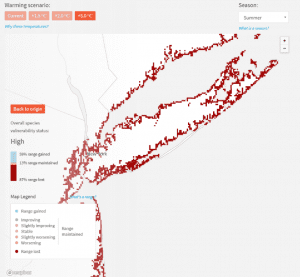 But this loss is so much more than just numbers. It is the loss of some of our familiar neighborhood birds we have come to know and love, of nature and our sense of place as we know it. It is not being able to share the joy of seeing a Piping Plover on our beaches with our children. It is the loss of our familiar seasons and weather patterns, where extreme events and natural disasters become more frequent. It’s some of our more vulnerable communities being put at further risk, as climate change will disproportionately affect our children, our elderly, lower income communities, and communities of color.
But this loss is so much more than just numbers. It is the loss of some of our familiar neighborhood birds we have come to know and love, of nature and our sense of place as we know it. It is not being able to share the joy of seeing a Piping Plover on our beaches with our children. It is the loss of our familiar seasons and weather patterns, where extreme events and natural disasters become more frequent. It’s some of our more vulnerable communities being put at further risk, as climate change will disproportionately affect our children, our elderly, lower income communities, and communities of color.
However, we still have time, and as the threat of climate change grows, so does the work we need to do. If we can limit climate change to between 1.5C to 2.0C, then we can limit the loss we will come to see. Indeed, 76% of bird species will be better off if we can do just that, and our communities and environment will also not see such drastic affects.
To get there we need to listen to the science, and make changes now both as individuals and as a nation. We have done this before. One of the greatest environmental successes of our time came as concerned Americans listened to what the birds were telling us. Toxic pesticides, pollution and ecosystem destruction were devastating some of our beloved birds including the Bald Eagle and the Brown Pelican. We gathered evidence, and looked hard at our values.
As Americans, we decided that we value clean water, clean air, and healthy ecosystems for our wildlife and natural spaces. We decided we did not want a world where unchecked environmental destruction quieted our birds as described in Rachel Carson’s Silent Spring. We listened to the science and we took action, and as the environment got healthier, the birds returned. I now marvel at the Bald Eagles and Osprey that have returned to Long Island, having never been a feature of my Long Island childhood.
So where do we stand on this 50th Earth Day? We need to yet again examine our values and embrace science-based conservation. We need to take action, to set in motion the momentum to spark the next environmental movement taking us beyond just one day. We need to face these incredible challenges and opportunities collectively, to do what needs to be done to solve this climate crisis.
The science illustrates how our warming planet will impact both the birds we all love, and the people in our communities, but also shows us that if we act there is still time to create a brighter future for birds and people. If we do something now to stabilize climate change, then we can improve the chances for the majority of these species. And we already have a lot of the tools we need to reduce the effects of global warming.
Climate change is a global crisis, a threat that humanity faces as a whole. Even as we face the current global pandemic threat, the need for effective and coordinated advocacy for climate change action is greater than ever. We have shown through our current pandemic crisis we are able to come together (even by being apart), and we must harness this united energy as the climate is changing and the window to act is closing. Birds are telling us, the time to act on climate change is now.
This Earth Day, and every day, we need to come together and listen and to act on our values. We once again need to be a collective voice of change to protect the earth we all share.
Brooke Bateman is a mother, nature lover, and scientist. She received her PhD in Ecology and Conservation and is the Senior Scientist, Climate at the National Audubon Society. The Stony Brook resident also sits on the board of Four Harbors Audubon Society.